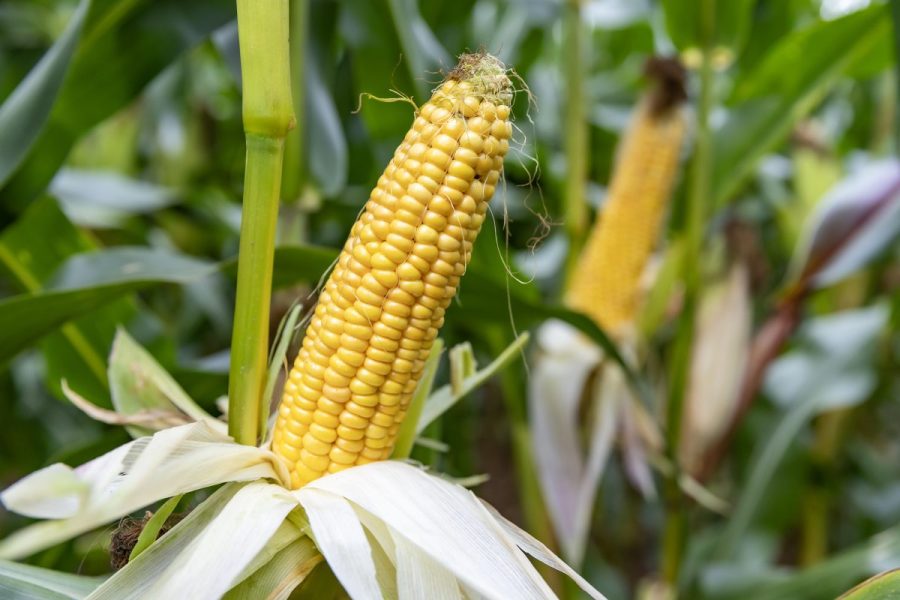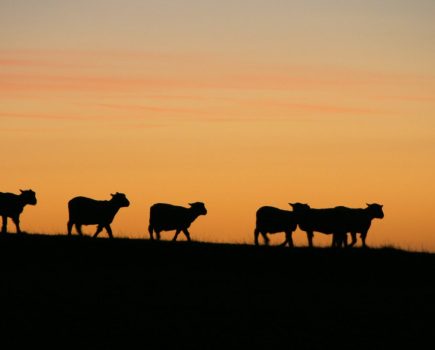With demand from both AD plants and feed markets on the rise, maize is cementing its place in UK rotations. But, success depends on smart variety choice, sound agronomy and a willingness to keep learning. CPM explores.
“Maize is still regarded as the number one feedstock for biogas yield, so there’s no question about its value in that sector.” ANDREW COOK
By Charlotte Cunningham
The UK’s demand for maize is showing no signs of abating – from both the anaerobic digestion (AD) industry and feed compounders – the crop is increasingly being viewed as a strategic player in arable rotations.
For growers, opportunities exist on multiple fronts, but careful variety choice and agronomic planning are key to maximising potential returns.
This is according to Andrew Cook, maize product manager at KWS, who says particularly from the AD perspective, there’s a window opening up. “A lot of the main maize-for-AD areas have struggled for moisture this year, leading to underperforming crops and reduced feedstock. Many of those plants will be looking to replenish in 2026, creating opportunity for growers to fill that gap.
“On top of that, there are a significant number of AD plants currently in construction or at planning stage. Maize is still regarded as the number one feedstock for biogas yield, so there’s no question about its value in that sector.”
The case for grain maize is just as strong, believes Andrew. “We import a huge amount into the UK every year. As such, there’s scope for more homegrown grain maize which can integrate well into rotations – particularly as it spreads the workload and allows machinery use to be balanced across the season.”
LOW BURDEN
From a practical on-farm perspective, one of maize’s attractions is its low pest and disease burden, highlights Andrew. “Once it’s established, you’re not firefighting all season. Costs are front-loaded at drilling and then again at harvest, but in between you can concentrate on your other key crops.”
To get the best from maize, Andrew says growers must start with the basics. “Good site selection underpins everything – matching variety choice to drilling and harvest windows, and to end-use. For forage maize, there’s also the potential to supply livestock farms, particularly in areas facing forage shortfalls, but I’d advise having a supply agreement in place before drilling rather than growing speculatively.”
He also stresses the importance of aligning maize maturity with the available growing days and heat units for the site. “We have to hit target dry matter so we can get the crop into the clamp at the right time, protect soils, and allow timely drilling of subsequent crops. Growing a huge biomass is pointless if it compromises the rest of the rotation.”
For those growing large areas of maize, variety maturity spread is a valuable management tool. “If you have, say, 400ha of maize, you’re not going to drill it all in a day and you’ll inevitably face some weather delays. Later-maturing varieties should go in first, early ones last, so that when it comes to harvest you’re cutting early types first and later ones last. It’s about smoothing operations at both ends of the season.”
OPTIMISED SEED RATES
When producing grain maize for the dry grain market, Andrew advises reducing seed rates. “This changes the cob-to-stover ratio, brings forward maturity and improves natural grain dry-down which is critical in the UK, where drying costs are high compared with continental producers.
“It’s not just about yield – it’s about getting that balance between output and the ability to shed moisture naturally. For those without drying facilities, crimping is an excellent alternative.
“Crimped maize is energy-dense feed, requires around 50% less storage than forage maize, and is easier to transport. You avoid the cost of drying, though of course you incur crimping and preservation costs. For livestock producers, it’s a product they often absolutely love, too.”
In terms of varieties, KWS has a comprehensive offering with KWS Anastasio an example of a grower-favourite thanks to its high yields and flexibility for use as forage, grain or for AD, says Andrew.
“For AD and forage growers specifically, there are lots of options. For those requiring something ultra early – either due to a marginal site or a short season – KWS Temprano or KWS Jardinero – deliver high gas potential in testing conditions.
“At the other end of the spectrum, in a longer season or on light land, KWS Granturismo is well suited to the longest growing windows, and consistently delivers exceptional output.”
Looking forward, Andrew believes the trend towards earlier-maturing varieties will continue. “Breeding progress, especially in early and ultra-early types, is delivering yield improvements of 1–2% per year. The yield gap between early and later-maturing varieties is closing meaning growers can choose earlier types without sacrificing output, and gain more flexibility in the rotation.”
One grower who’s realised the value of maize as part of the arable rotation is James Faulkner. Farming at Colchester in Essex, James has gradually reshaped his system during the past two decades.
Once a continuous wheat business, the farm now grows 500ha of maize with a further 900ha harvested on contract. The crop supplies both an AD plant and the grain market, but as James explains, the path to this point has been full of trial, error and plenty of learning.
“About 20 years ago we moved to a more traditional rotation, and then around eight or nine years back, we had the opportunity to work with an AD plant. That’s where maize came in.”
Maize was a steep learning curve for an arable business rooted in cereals, he notes. “Traditionally, maize was more of a western crop, grown with livestock. What works there doesn’t always work here.”
One of the most significant lessons has been around soil type. “When we first started, we grew maize on the lighter land and rye for AD on the heavier ground. But we soon realised maize requires moisture, so we swapped them around. We’re now growing maize on London and Hanslope clays, and while the light land can out-yield the heavy soils in a good year, the clays give us a far more reliable average.”
Approaches to establishment have been equally varied. “We’ve gone from ploughing to min-till, and now we’re doing a lot of maize after cover crops with strip-till,” says James. “The strip-till looks promising, but it can be tricky especially on headlands. This year we strip-tilled the fields but cultivated the headlands – we’re still working out what gives the most consistent result.”
FOLLOWING CROP
Perhaps the biggest headache has been establishing wheat after maize, he suggests. “You’re harvesting late in the season, leaving huge amounts of trash on the surface. Our existing drill just wouldn’t cope.”
After trialling various disc-based and cultivation setups, James recently invested in a 9m Amazone Cirrus. “It handles the residue really well and the hope is we’ll be able to go straight in after maize more often. On heavy soils that’s a big step forward.”
Variety choice is another area where James has been on a journey. “As I grow older, reliability has become the number one priority,” he laughs. “Any variety can perform brilliantly in one year but we want consistency.”
Multi-purpose varieties have been especially valuable, he adds. “KWS Anastasio is probably our favourite. It’s adaptable – excellent as forage, but also strong for grain. We drop the seed rate down to 75–80,000 seeds/ha for grain, compared with 100–110,000 for forage.”
Trial work on the farm has helped refine variety decisions too, says James. “We’ve run variety trials for years which has been much easier since we invested in our own combine and forager. Anastasio has been very strong, and newer options like Granturismo are looking like the next step for us. KWS has been not just consistent, but also genuinely interested in what we’re doing – which makes a difference.”
Despite the challenges, James is convinced maize has a strong role to play – both in AD systems and as a grain crop. “The soils are better, the business is more resilient, and there are genuine market opportunities here in the East.”
For growers considering the crop, his advice is pragmatic: start with reliable, well-known varieties, and test others on smaller areas. “I always say to keep experimenting too – with establishment, with nutrition, with variety choice. You won’t get clear answers every year, but over time you build a picture of what works.”
And as the combines roll later this autumn, he’ll once again be weighing up what the season has taught him. “It’s been a tricky year with the drought, so crops are variable; some look fantastic, others are struggling. But that’s maize – and that’s why you keep learning.”
This article was taken from the latest issue of CPM. Read the article in full here.
For more articles like this, subscribe here.
Sign up for Crop Production Magazine’s FREE e-newsletter here.




